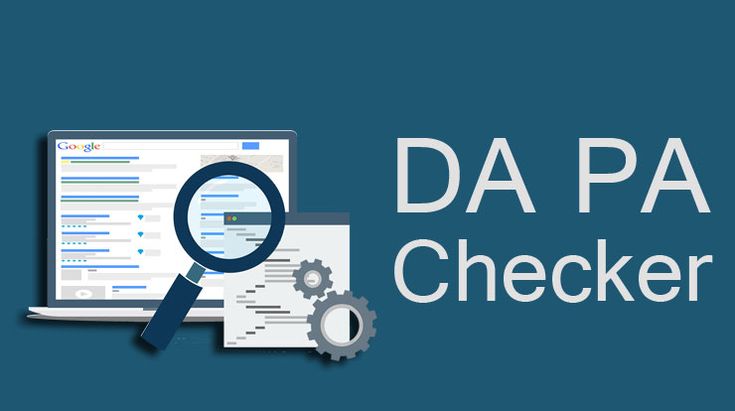In the ever-evolving world of SEO, understanding the metrics that define your website’s authority is crucial for crafting a successful strategy. Domain Authority (DA) and Page Authority (PA) are two such metrics that have become indispensable for digital marketers and website owners. This blog will guide you through the importance of check DA and PA score how to check these scores, and actionable tips to improve them.
Understanding Domain Authority (DA) and Page Authority (PA)
Domain Authority (DA): Domain Authority is a score developed to predict how well a website will rank on search engine result pages (SERPs). The DA score ranges from 1 to 100, with higher scores corresponding to a greater ability to rank. This metric is calculated using multiple factors, including the number of linking root domains and the number of total links. Essentially, DA provides an insight into the overall strength of a website.
Page Authority (PA): Page Authority, on the other hand, measures the likelihood of a specific page to rank well in SERPs. Similar to DA, the PA score also ranges from 1 to 100 and is influenced by various factors, such as link profile and the quality of content on the page. PA helps in assessing the potential performance of individual pages on your website.
Why DA and PA Scores Matter
Understanding and monitoring DA and PA scores are vital for several reasons:
- Benchmarking Performance: These scores provide a benchmark to measure your website’s performance against competitors.
- SEO Strategy Development: High DA and PA scores often correlate with better SEO performance, making them key indicators for refining your SEO strategies.
- Link Building: High scores can enhance your link-building efforts, as they reflect the quality and authority of your website or pages.
- Content Optimization: PA can guide you in identifying which pages need more optimization to perform better in search rankings.
How to Check Your DA and PA Scores
Checking your DA and PA scores is a straightforward process with the right tools. Here’s a step-by-step guide:
- Use Online Tools: Several online tools provide DA and PA scores for free. These tools not only offer scores but also provide insights into the factors affecting them. Here’s how to use one of the popular tools:
- Visit an online DA and PA checker tool.
- Enter your website URL in the designated field.
- Click on the “Check” button to retrieve your scores.
- Analyze the Results: Once you receive your DA and PA scores, the tool will typically provide additional data, such as the number of linking root domains, the total number of links, and other relevant metrics. Use this data to analyze your website’s strengths and weaknesses.
- Track Over Time: Checking your DA and PA scores regularly helps you track your progress. Note any changes in your scores and correlate them with recent SEO efforts or changes to your website.
Improving Your DA and PA Scores
Achieving high DA and PA scores requires a combination of technical SEO, quality content, and robust link-building strategies. Here are some actionable tips to improve these scores:
- Quality Content Creation:
- Engage Your Audience: Create high-quality, engaging content that addresses the needs and interests of your target audience. Well-researched, informative, and valuable content is more likely to attract backlinks.
- Regular Updates: Update your content regularly to keep it fresh and relevant. Search engines favor updated content, which can positively impact your PA scores.
- Link Building:
- High-Quality Backlinks: Focus on acquiring backlinks from authoritative and relevant websites. High-quality backlinks are a significant factor in boosting both DA and PA scores.
- Internal Linking: Implement a strong internal linking strategy to distribute link equity across your pages. This helps search engines understand the structure and importance of your pages, improving their PA scores.
- Technical SEO:
- Website Structure: Ensure your website has a clear and organized structure. Use a logical hierarchy for your content and make it easy for search engines to crawl and index your pages.
- Mobile Optimization: With the increasing use of mobile devices, having a mobile-optimized website is crucial. A responsive design enhances user experience and can positively affect your DA and PA scores.
- On-Page SEO:
- Optimize Titles and Descriptions: Craft compelling and keyword-rich titles and meta descriptions for your pages. These elements are essential for both user engagement and search engine ranking.
- Header Tags: Use header tags (H1, H2, H3) to structure your content. This makes it easier for search engines to understand the content hierarchy and improves readability for users.
- Improve Page Load Speed:
- Fast Loading Times: A slow-loading website can deter users and negatively impact your SEO performance. Use tools like Google PageSpeed Insights to identify and fix issues that affect your page load speed.
- Optimize Images: Compress images and use appropriate formats to reduce load times without compromising quality.
- User Experience (UX):
- Easy Navigation: Ensure your website is easy to navigate. A user-friendly interface enhances user experience and encourages longer visits, which can positively influence your PA scores.
- Engaging Design: An appealing and professional design can attract more visitors and encourage them to explore your website further, boosting engagement metrics.
Monitoring and Adapting
Improving your DA and PA scores is an ongoing process. Regularly monitor your scores using online tools and adjust your strategies based on the results. SEO is dynamic, and staying updated with the latest trends and algorithm changes is essential for sustained success.
Conclusion
Domain Authority and Page Authority are critical metrics for understanding and improving your website’s SEO performance. By regularly checking your DA and PA scores and implementing the strategies outlined above, you can enhance your website’s visibility and ranking on search engines. Remember, SEO is a long-term investment, and consistent efforts in quality content creation, link building, and technical optimization will yield significant rewards over time.




